Blog
Albert Leornes Greene (born April 13, 1946), better known as Al Green, is an American singer, songwriter, pastor and record producer best known for recording a series of soul hit singles in the early 1970s, including “Take Me to the River“, “Tired of Being Alone“, “I’m Still in Love with You“, “Love and Happiness“, and his signature song, “Let’s Stay Together“. After an incident in which his girlfriend died by suicide, Green became an ordained pastor and turned to gospel music. He later returned to secular music.
Green was inducted to the Rock and Roll Hall of Fame in 1995. He was referred to on the museum’s site as being “one of the most gifted purveyors of soul music”. He has also been referred to as “The Last of the Great Soul Singers”. Green is the winner of 11 Grammy Awards, including the Grammy Lifetime Achievement Award. He has also received the BMI Icon award and is a Kennedy Center Honors recipient. He was included in the Rolling Stone list of the 100 Greatest Artists of All Time, ranking at No. 65,as well as its list of the 100 Greatest Singers, at No. 14.
Albert Leornes Greene was born on April 13, 1946, in Forrest City, Arkansas. The sixth of ten children born to Cora Lee and Robert G. Greene, Jr., a sharecropper, Al began performing with his sister in a group called the Greene Brothers at around the age of ten. The Greene family relocated to Grand Rapids, Michigan, in the late 1950s. Al was kicked out of the family home while in his teens, after his devoutly religious father caught him listening to Jackie Wilson. He then lived with a prostitute, began hustling and indulged in recreational drugs.
more...John William “Jack” Casady (born April 13, 1944) is an American bass guitarist, best known as a member of Jefferson Airplane and Hot Tuna. Jefferson Airplane became the first successful exponent of the San Francisco Sound. Singles including “Somebody to Love” and “White Rabbit” charted in 1967 and 1968. Casady, along with the other members of Jefferson Airplane, was inducted into the Rock and Roll Hall of Fame in 1996.
Casady was born in Washington D.C., the son of Mary Virginia (née Quimby) and William Robert Casady. His father was of half Irish Protestant and half Polish Jewish ancestry. His mother was a relative of aviator Harriet Quimby; some of her family had been in North America since the 1600s.
First playing as a lead guitarist with the Washington, D.C.-area rhythm and blues band The Triumphs, he switched to bass during his high school years, and while still underage (and with a forged I.D.) played the Washington D.C. club scene, backing artists such as Little Anthony and the Imperials.
more...Lawrence “Bud” Freeman (April 13, 1906 – March 15, 1991) was an American jazz musician, bandleader, and composer, known mainly for playing tenor saxophone but also able at the clarinet.
In 1922, Freeman and some friends from high school formed the Austin High School Gang. Freeman played the C melody saxophone with band members such as Jimmy McPartland and Frank Teschemacher. before switching to tenor saxophone two years later. The band was influenced by the New Orleans Rhythm Kings and Louis Armstrong. While Armstrong was in King Oliver‘s Creole Jazz Band, Freeman attended performances at Lincoln Gardens with McPartland. They were nicknamed “Alligators”.
In 1927, he moved to New York City, where he worked as a session musician and band member with Red Nichols, Roger Wolfe Kahn, Ben Pollack, and Joe Venuti. One of his most notable performances was a solo on Eddie Condon‘s 1933 recording, The Eel, which became Freeman’s nickname for his long snake-like improvisations. Freeman played with Tommy Dorsey‘s Orchestra (1936–1938) and Benny Goodman‘s band in 1938, before forming the Summa Cum Laude Orchestra (1939–1940). Freeman joined the U.S. Army during World War II and headed a U.S. Army band in the Aleutian Islands.
more...Tuesday April 12th 2022. Five Workshops culminating into a Thursday performance. 6th grade thru HS students. RTR Public Schools in Tyler, MN.
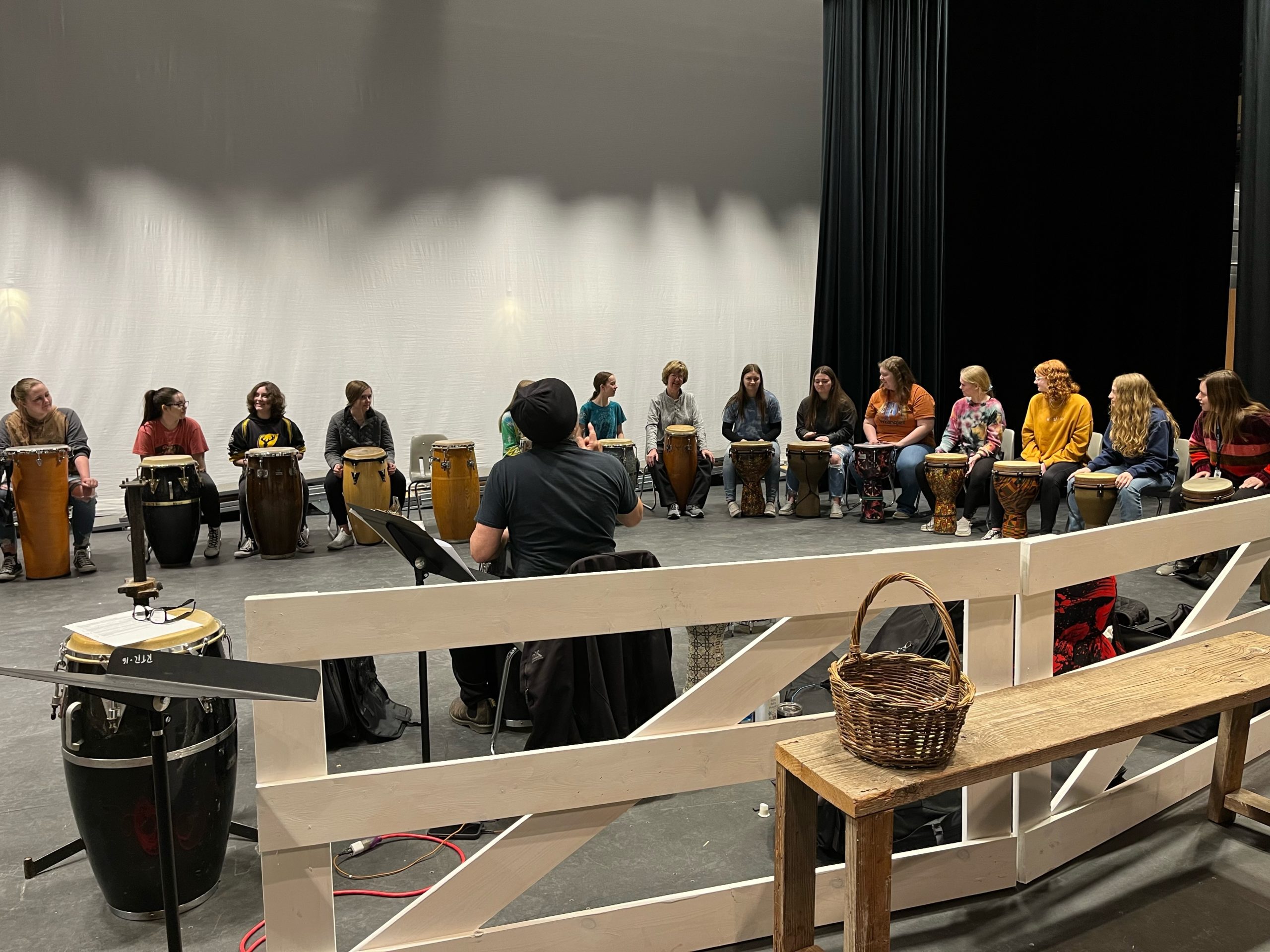
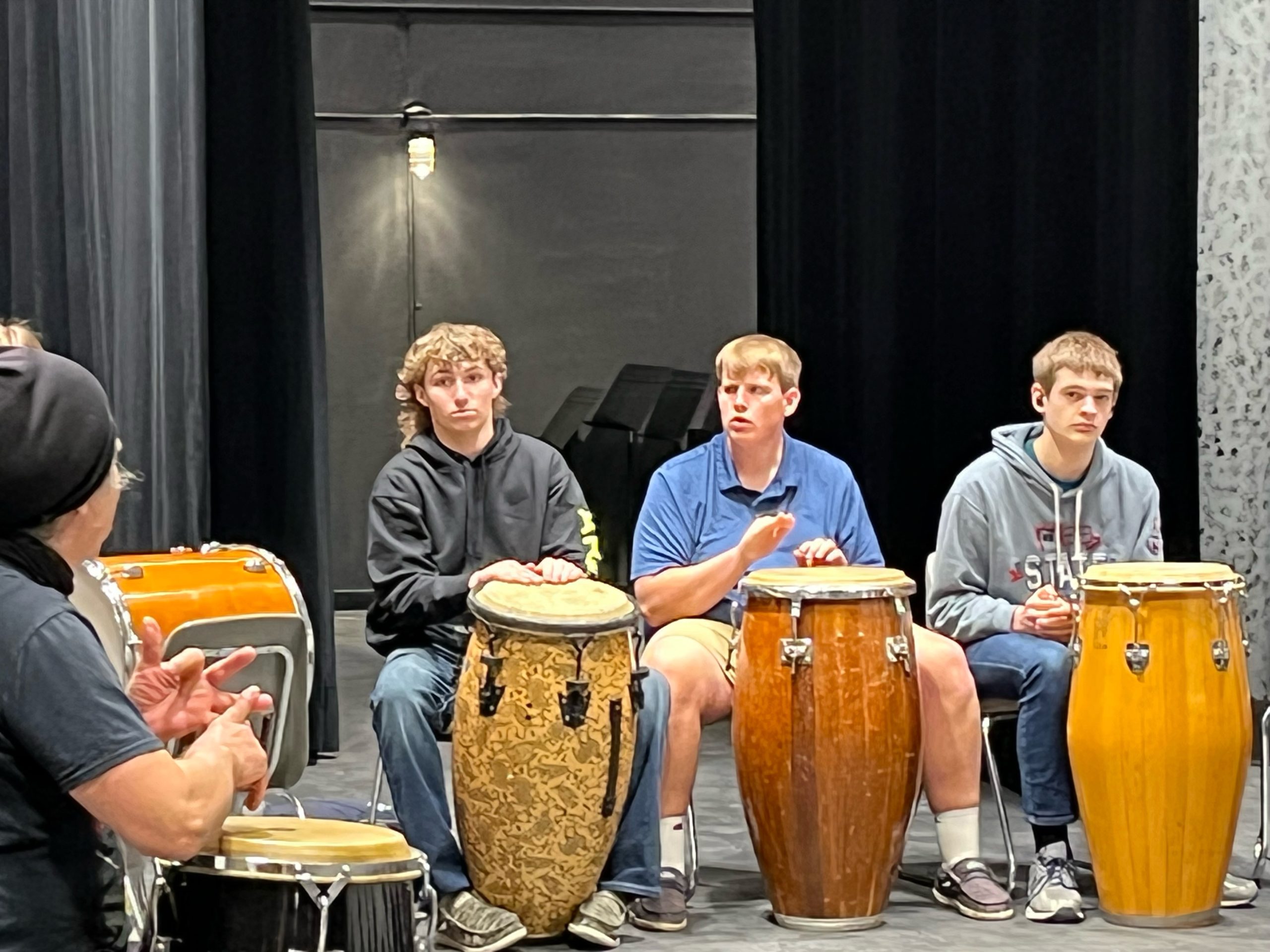
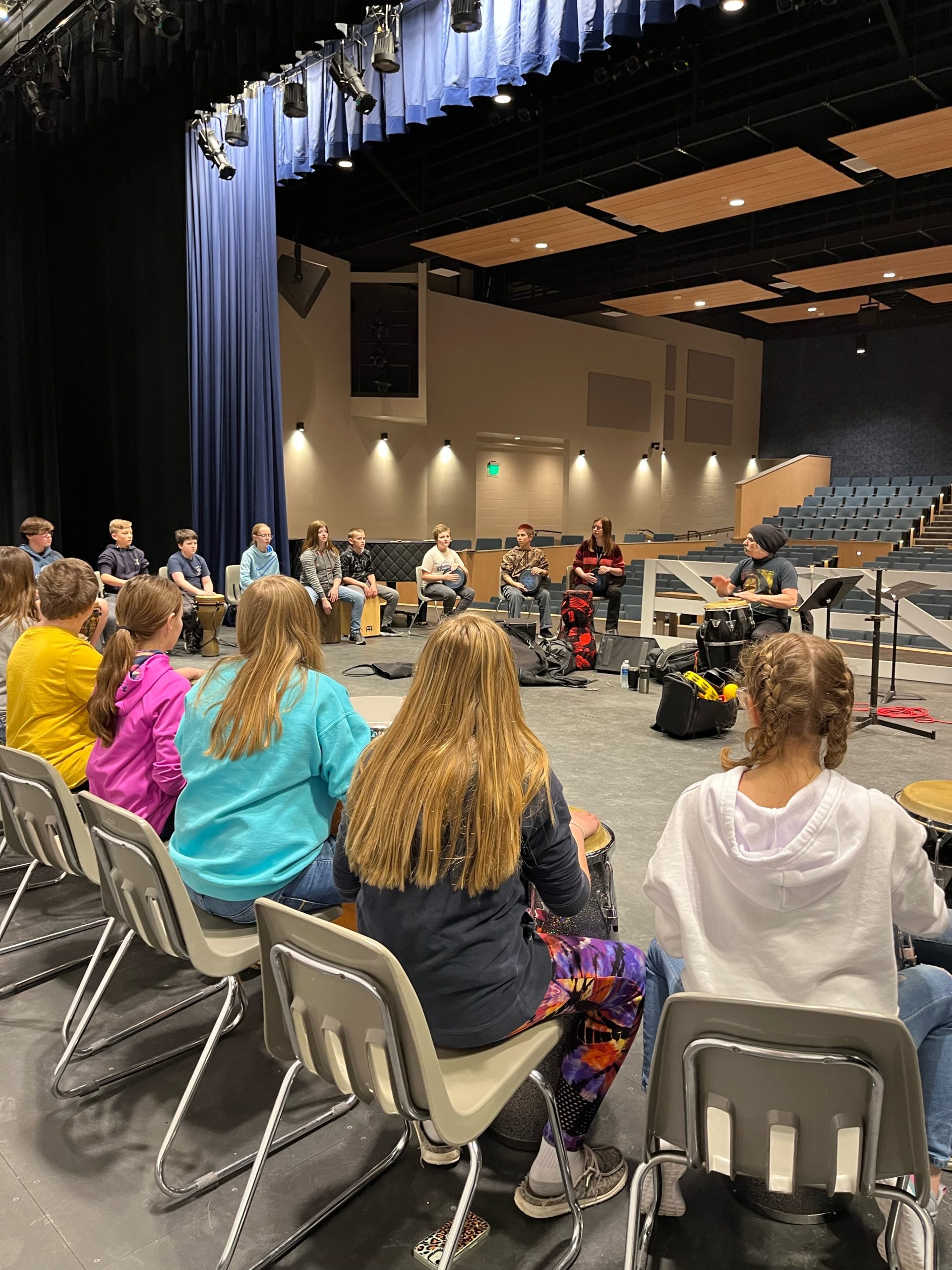
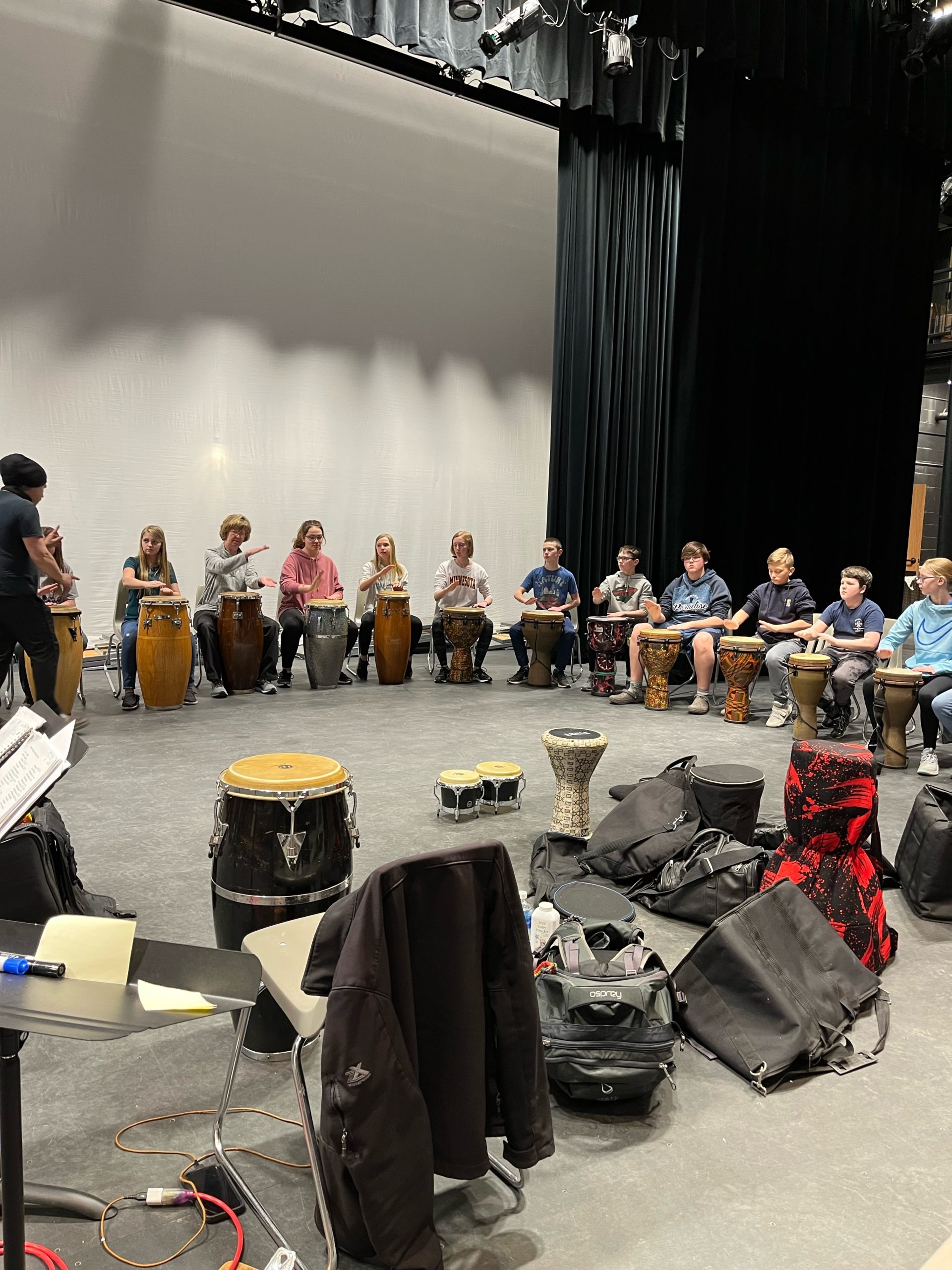
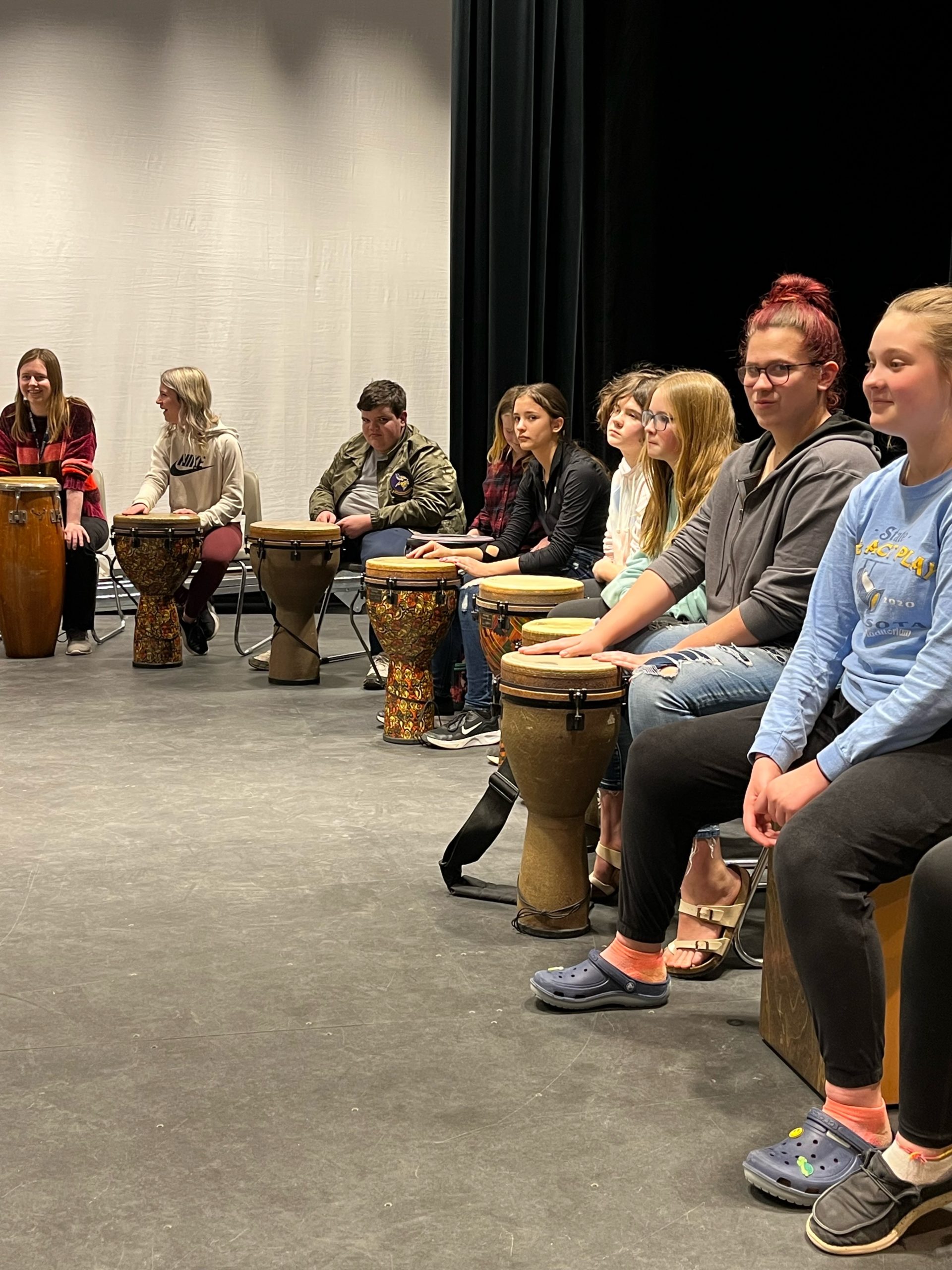
more...
Massive stars, abrasive winds, mountains of dust, and energetic light sculpt one of the largest and most picturesque regions of star formation in the Local Group of Galaxies. Known as N11, the region is visible on the upper right of many images of its home galaxy, the Milky Way neighbor known as the Large Magellanic Cloud (LMC). The featured image was taken for scientific purposes by the Hubble Space Telescope and reprocessed for artistry. Although the section imaged above is known as NGC 1763, the entire N11 emission nebula is second in LMC size only to the Tarantula Nebula. Compact globules of dark dust housing emerging young stars are also visible around the image. A recent study of variable stars in the LMC with Hubble has helped to recalibrate the distance scale of the observable universe, but resulted in a slightly different scale than found using the pervasive cosmic microwave background.
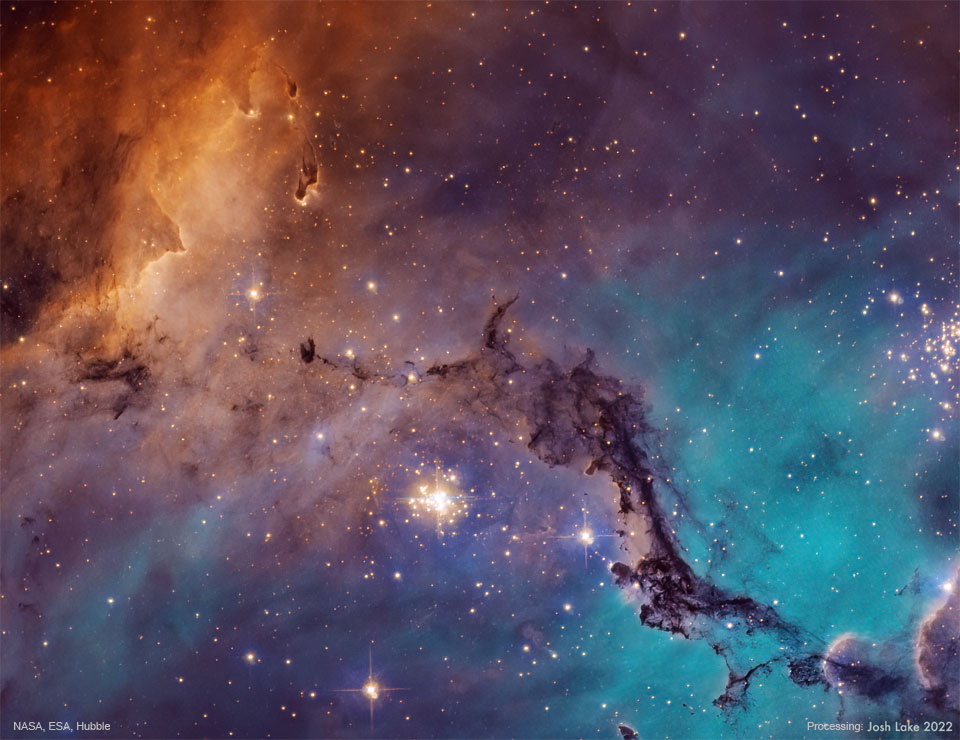
Herbert Jeffrey Hancock (born April 12, 1940) is an American jazz pianist, keyboardist, bandleader, composer, and occasional actor. Hancock started his career with trumpeter Donald Byrd‘s group. He shortly thereafter joined the Miles Davis Quintet, where he helped to redefine the role of a jazz rhythm section and was one of the primary architects of the post-bop sound. In the 1970s, Hancock experimented with jazz fusion, funk, and electro styles, utilizing a wide array of synthesizers and electronics. It was during this period that he released perhaps his best-known and most influential album, Head Hunters.
Hancock’s best-known compositions include “Cantaloupe Island“, “Watermelon Man“, “Maiden Voyage“, and “Chameleon“, all of which are jazz standards. During the 1980s, he enjoyed a hit single with the electronic instrumental “Rockit“, a collaboration with bassist/producer Bill Laswell. His 2007 Joni Mitchell tribute album River: The Joni Letters won the 2008 Grammy Award for Album of the Year, only the second jazz album to win the award after Getz/Gilberto in 1965.
Since 2012, Hancock has served as a professor at the University of California, Los Angeles, where he teaches at the UCLA Herb Alpert School of Music. He is also the chairman of the Herbie Hancock Institute of Jazz (formerly known as the Thelonious Monk Institute of Jazz until 2019).
Hancock was born in Chicago, the son of Winnie Belle (Griffin), a secretary, and Wayman Edward Hancock, a government meat inspector. His parents named him after the singer and actor Herb Jeffries. He attended Hyde Park High School. Like many jazz pianists, Hancock started with a classical music education. He studied from age seven, and his talent was recognized early. Considered a child prodigy, he played the first movement of Mozart‘s Piano Concerto No. 26 in D Major, K. 537 (Coronation) at a young people’s concert on February 5, 1952, with the Chicago Symphony Orchestra (led by CSO assistant conductor George Schick) at age 11.
more...James D. “Shakey Jake” Harris (April 12, 1921 – March 2, 1990) was an American Chicago blues singer, harmonicist and songwriter. He released five albums over a period of almost 25 years. He was often musically associated with his nephew Magic Sam.
James D. Harris was born in Earle, Arkansas, and relocated with his family to Chicago, Illinois, at the age of seven. He played in several Chicago blues ensembles in the late 1940s.He also worked as a mechanic and as a professional gambler (his nickname came from a dice players’ expression, “shake ’em”). His debut recording was the single “Call Me if You Need Me”, backed with “Roll Your Moneymaker”, released by Artistic Records in 1958, featuring Magic Sam and Syl Johnson on guitar and produced by Willie Dixon. Harris was not paid for the session, but he won $700 shooting craps with label owner Eli Toscano.
more...Theodore Roosevelt “Hound Dog” Taylor (April 12, 1915 – December 17, 1975) was a Chicago blues guitarist and singer.
Taylor was born in Natchez, Mississippi, in 1915, though some sources say 1917. He first played the piano and began playing the guitar when he was 20. He moved to Chicago in 1942.
Taylor had a condition known as polydactylism, which resulted in him having six fingers on both hands. As is usual with the condition, the extra digits were rudimentary nubbins and could not be moved. One night, while drunk, he cut off the extra digit on his right hand using a straight razor.
He became a full-time musician around 1957, but remained unknown outside the Chicago area, where he played small clubs in black neighborhoods and at the open-air Maxwell Street Market.He was known for his electrified slide guitar playing (roughly styled after that of Elmore James), his cheap Japanese Teisco guitars, and his raucous boogie beats. In 1967, Taylor toured Europe with the American Folk Blues Festival, performing with Little Walter and Koko Taylor.
more...RTR Public Schools, Tyler MN 5th grades thru High School. Four Day Residency with performance on Thursday. April 11th thru April 14th 815am-330pm Appreciating the Cultures of the World via Rhythm.
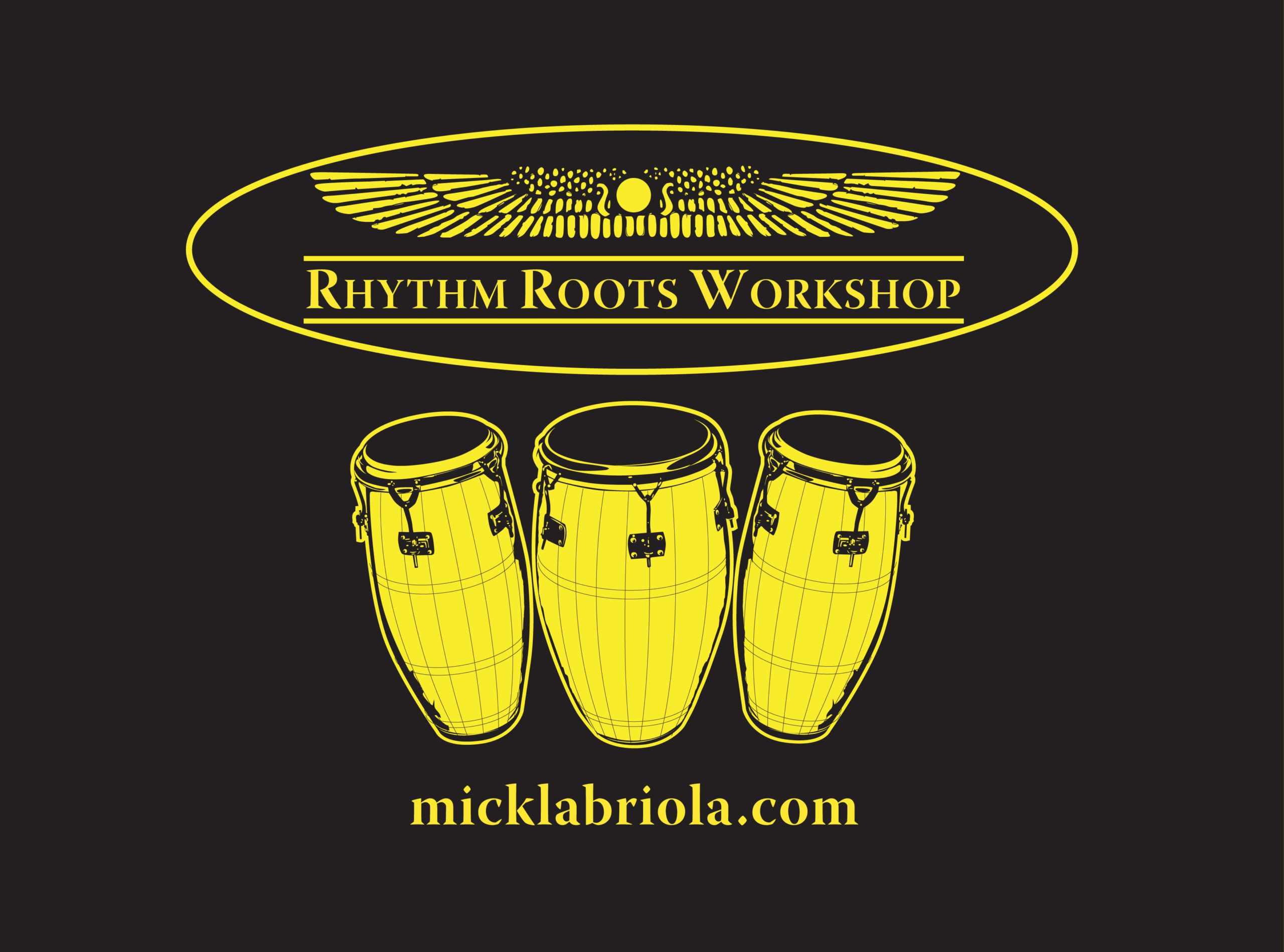
The spiral galaxy M91 fills the frame of this Wide Field Camera 3 observation from the NASA/ESA Hubble Space Telescope. M91 lies approximately 55 million light-years from Earth in the constellation Coma Berenices and — as is evident in this image — is a barred spiral galaxy. While M91’s prominent bar makes for a spectacular galactic portrait, it also hides an astronomical monstrosity. Like our own galaxy, M91 contains a supermassive black hole at its centre. A 2009 study using archival Hubble data found that this central black hole weighs somewhere between 9.6 and 38 million times as much as the Sun. Whilst archival Hubble data allowed astronomers to weigh M91’s central black hole, more recent observations have had other scientific aims. This observation is part of an effort to build a treasure trove of astronomical data exploring the connections between young stars and the clouds of cold gas in which they form. To do this, astronomers used Hubble to obtain ultraviolet and visible observations of galaxies already seen at radio wavelengths by the ground-based Atacama Large Millimeter/submillimeter Array (ALMA). Observing time with Hubble is a highly valued, and much sought-after, resource for astronomers. To obtain data from the telescope, astronomers first have to write a proposal detailing what they want to observe and highlighting the scientific importance of their observations. These proposals are then anonymised and judged on their scientific merit by a variety of astronomical experts. This process is incredibly competitive: following Hubble’s latest call for proposals, only around 13% of the proposals were awarded observing time. Are you interested in finding out what Hubble is observing right now? You can follow the space telescope’s observations in real time at this link.
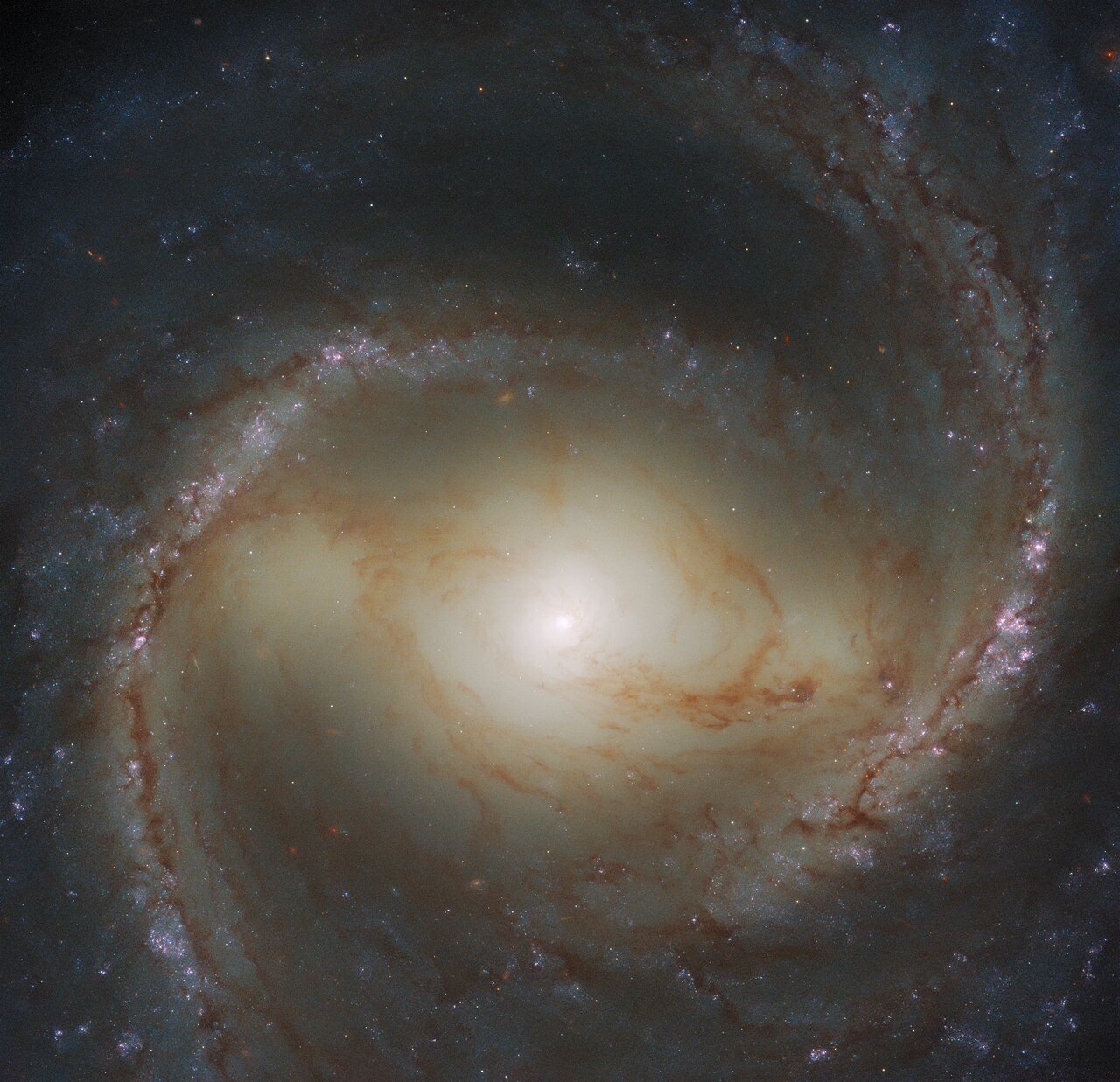
Neville Eugenton Staple (born 11 April 1955) is a Jamaican-born English singer, known for his work with the 2 Tone ska band the Specials, as well as with his own group the Neville Staple Band. He also performed with Ranking Roger in the supergroup Special Beat.
Staple was born in Manchester, Jamaica. He left Jamaica to live in the English town of Rugby, Warwickshire at the age of five but later moved to Coventry. Neville was a regular fixture at the Locarno Ballroom in Coventry, where he met the resident DJ there, Pete Waterman. Waterman briefly managed the Specials and would later write the foreword to Staple’s 2009 biography, Original Rude Boy.[3]
Staple’s early vocal style was mostly “toasting“—or chanting over a rhythm—a forerunner of rapping brought to Britain in the 1960s by musicians from Jamaica. Staple honed his toasting skills in the sound system scene in Coventry during the 1970s, first on his cousin’s “Messenger Sound” and later his own system called “Jah Baddis”.
more...Luther Johnson (born April 11, 1939, Itta Bena, Mississippi) is a Chicago blues singer and guitarist, who performs under the name Luther “Guitar Junior” Johnson. He is not to be confused with Luther “Georgia Boy” Johnson, Luther “Houserocker” Johnson, or Lonnie “Guitar Junior” Brooks.
Johnson moved to Chicago with his family in 1955. During the 1960s, he performed with Magic Sam. He performed in Muddy Waters‘ band from 1972 to 1980. In 1980, four of his songs were included in an anthology released by Alligator Records. That same year he appeared as a member of the Legendary Blues Band, backing John Lee Hooker in the movie The Blues Brothers.
Johnson moved to the East Coast and began fronting his own band, the Magic Rockers. His “Walkin’ the Dog” was recorded live at the Montreux Festival‘s Blues Night. He won a Grammy Award in 1985 for Best Traditional Blues Album for his part in Blues Explosion. He recorded three albums released by Telarc Records: Slammin’ on the West Side (1996), Got to Find a Way (1998), and Talkin’ About Soul (2001). He also performed on three albums by the Nighthawks.
He lived in Antrim, New Hampshire for many years but moved to Florida in 2017.
more...John Levy (April 11, 1912 – January 20, 2012) was an American jazz double-bassist and businessman.
Levy was born in New Orleans, Louisiana. In 1944, he left his family home in Chicago, Illinois, and moved to New York City where he played bass for such jazz musicians as Ben Webster, Erroll Garner, Milt Jackson, and Billie Holiday. In 1949, he became the bassist in the original George ShearingQuintet, where he also acted as Shearing’s road manager. In 1951, Levy opened John Levy Enterprises, Inc., becoming the first African-American personal manager in the pop or jazz music field. By the 1960s, Levy’s client roster included Shearing, Nancy Wilson, Cannonball Adderley, Joe Williams, Shirley Horn, Soul singer Jimmie Raye, and Ramsey Lewis.
In 1997, Levy was inducted into the International Jazz Hall of Fame, and in 2006 he was named a Jazz Master by the National Endowment for the Arts.
He died on January 20, 2012, aged 99, in Altadena, California
more...More Posts
- Daily Roots The Prophets
- Balancing Liberty 2024
- Veterans Day 2024
- Cosmos MCG+05-31-045
- LaVern Baker
- Ernestine Anderson
- Mose Allison
- World Music Sona Jobarteh
- Daily Roots Max Romeo
- Remembering the S.S. Edmund Fitzgerald on the 49th anniversary
- RBG Injustice
- Biog Chief Ellis
- Cosmos Valles Marineris
- Tim Rice
- Russell Means
- Bobby Rush
- Hubert Laws
- Paul Bley
- Andrew Cyrille
- World Music Trio Mandili